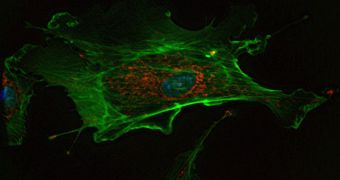Each and every one of the cells in our bodies, as well as in the bodies of higher life forms, contains proteins. These structures constantly change electrons, which means that they basically trade electrical impulses. How this was done remained a mystery until not so long ago, when investigators at the University of Minnesota began looking more closely into this issue. Now, in a new paper published in the March 12 issue of the respected journal Science, they reveal the molecular image of a mechanism that is capable of promoting electron flow between proteins.
The new investigation not only promises breathtaking progress for biology, but it may also hold the key towards vastly improving energy efficiency in a host of other systems as well. These include everything from nanoscale devices to national power grids. The research team that made the discovery was led by expert Carrie Wilmot, who is an associate professor in the College of Biological Sciences at the university. She reveals that it is precisely this ability to carry electrons inside the cells that allow us and most other life forms to exist, survive, and pass our genes to future generations.
“Evolution has been fine-tuning electricity in organisms for a lot longer than humans have been using it. We can learn a lot from nature about how to use it more efficiently. This new glimpse at how the body uses electricity could lead to nanotechnology to shrink electronic circuitry even further or a more efficient grid to provide power to homes and businesses,” the team leader says. The team mentions that the energy produced as electrons move through the cells is used for essential cellular processes, such as producing more proteins, and even genetic material, including DNA. These are the main building blocks of life, alongside RNA and amino-acids.
What Wilmot and her team did was basically create a model of this process, using an imaging technique known as X-ray crystallography. “Obtaining a crystal structure of a complex cellular electron transfer system is like being behind stage at a magic show. We have always known there was a trick, but now the Wilmot group has provided a unique view of how this extraordinary chemical feat is accomplished,” explains US National Institutes of Health (NIH) National Institute of General Medical Sciences biochemistry grant supervisor, Vernon Anderson.

 14 DAY TRIAL //
14 DAY TRIAL //